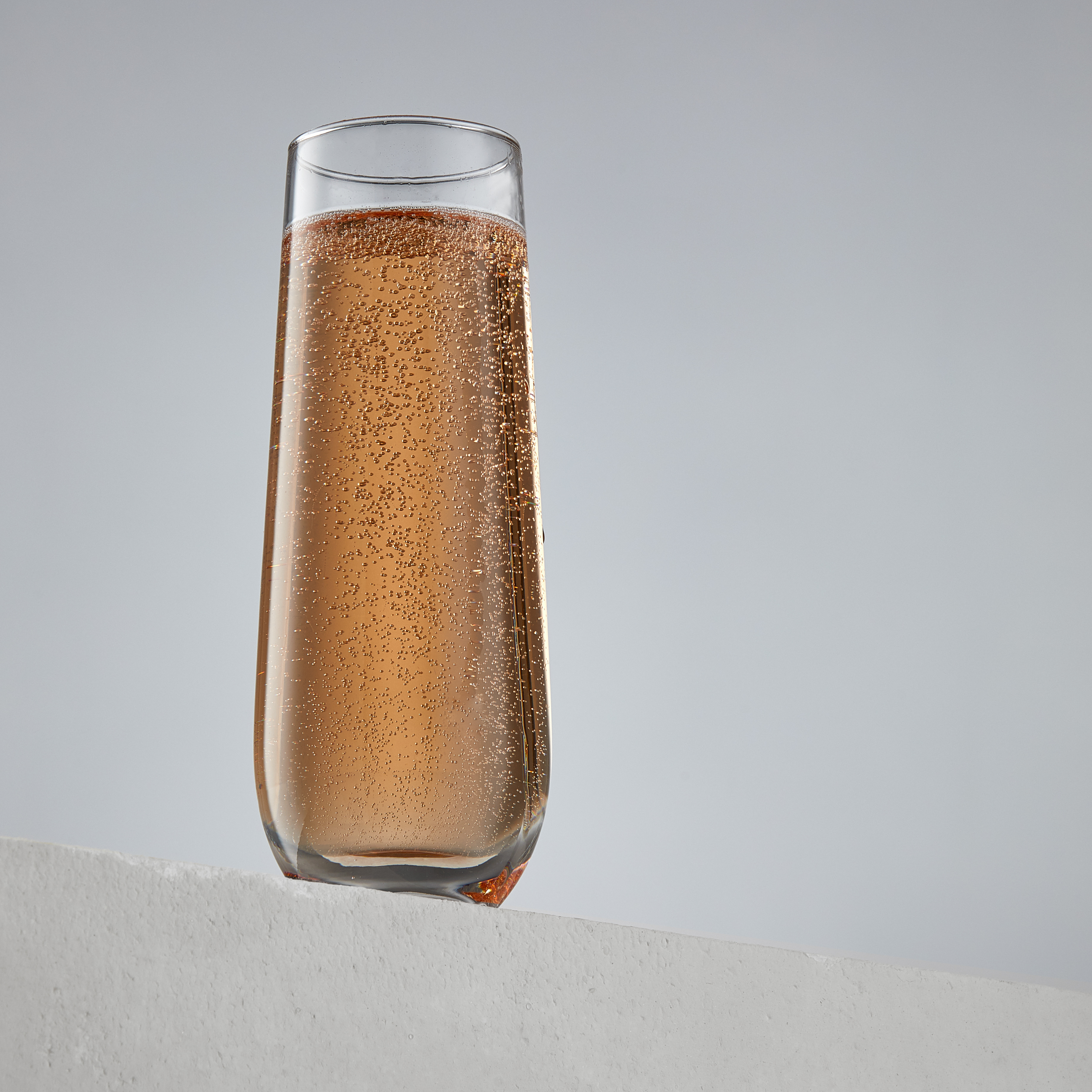Shop Cocktail Glasses
In the world of fine dining, elegant decor, and celebratory toasts, the choice between glass and crystal can elevate an experience from mundane to extraordinary. However, discerning between glass and crystal, especially when considering the inclusion of lead in traditional crystal items, can be perplexing. This comprehensive guide seeks to shed light on these materials, introducing the lead-free innovation of crystalline, and how JoyJolt embraces this technology for safer, yet equally elegant glassware options.
What is Glass?
Glass is a versatile and ancient material made primarily from silica (sand), along with soda ash and limestone. The mixture is heated at high temperatures until it melts, then cooled to form glass. Glass is cherished for its clarity, durability, and versatility, making it a staple in households and industries worldwide. And for those wondering, does all glass contain lead?, lead is not typically added to glass as an ingredient, except for leaded crystal.
What is Crystal and is it Safe?
Crystal is a type of glass that includes added lead oxide, enhancing its properties to create finer, more decorative items. The lead oxide increases the glass's refractive index, giving crystal its renowned sparkle and brilliance. Crystal is also a heavier material, and can be worked into more detailed patterns than standard glass.
The presence of lead has raised health concerns, especially with products used to consume food and beverages. This concern has led to the creation and rise of lead-free crystal alternatives that maintain the aesthetic and physical benefits of traditional crystal without the associated risks.
Does All Crystal Have Lead?
Not all crystal contains lead. In response to safety concerns, the glassware industry has seen the introduction of "crystalline," a lead-free glass material alternative, that mimics the optical properties of traditional crystal without using harmful substances. Developed in Europe, this innovative material allows for the creation of glassware that combines the clarity, weight, and sound of leaded crystal, ensuring a safer dining or drinking experience without compromising on elegance or quality.
The Differences Between Glass, Crystal, and Lead-Free Crystal
Both glass and crystal undergo a transformative journey, beginning their life in the intense heat of a furnace until they reach a molten state. It is at this pivotal moment that a skilled glassblower steps in, shaping the fluid material into the final, desired designs. Despite their shared beginnings, these two materials diverge significantly in their characteristics, including their chemical makeup, weight, the way they interact with light, and the unique sounds they produce.
Appearance Differences
- Glass: May have a slight cloudiness or color tint (green with iron, blue with soda-lime).
- Crystal (Lead-Based): Known for its clear, radiant appearance.
- Lead-Free Crystal: Also offers high clarity, similar to lead-based crystal but without the health concerns related to lead.
Weight Differences
- Glass: Generally lighter than crystal counterparts.
- Crystal (Lead-Based): Heavier due to the inclusion of lead or other metals.
- Lead-Free Crystal: Lighter than lead-based crystal, due to the absence of lead, but may still be heavier than standard glass depending on the alternative materials used. For example, machine blown European Crystalline can be worked to have a thinner wall, with innovations at factories going so far to creating an almost weightless lead-free Crystal wine glass. However, given the thicker nature of soda lime glass, some Crystalline products may still carry some heft.
Thickness Differences
- Glass: Typically features thicker rims due to its composition and higher processing temperatures. Generally, it is more durable given its thickness.
- Crystal (Lead-Based): Can be made thinner than glass while retaining strength because of its lead content.
- Lead-Free Crystal: Achieves thinness and strength through alternative materials, maintaining the elegance of traditional crystal without using lead.
Cut Differences
- Glass: Hardens quickly, limiting time for detailed cuts. Shaping is often done by bending or blowing into molds while the material is hot.
- Crystal (Lead-Based): Minerals like lead soften the material, allowing for detailed, hand-cut designs without sacrificing strength.
- Lead-Free Crystal: Like lead-based crystal, it allows for intricate cuts and designs due to the alternative strengthening agents used in place of lead.
Refraction Differences
- Glass: Minimal refraction (due to minimal metal content), allowing light to pass through similarly to a clear windowpane.
- Crystal (Lead-Based): High metal content enables significant light refraction, creating colorful light effects.
- Lead-Free Crystal: Continues to refract light beautifully, utilizing non-lead metals to create similar visual effects to lead-based crystal.
Sound Differences
- Glass: Produces a subdued sound when tapped.
- Crystal (Lead-Based): Known for its clear, resonant ring.
- Lead-Free Crystal: Also capable of producing a distinct, resonant sound, like lead-based crystal, due to its dense composition.
Benefits
Choosing between glass and crystal (or crystalline) depends on the occasion, aesthetics, and safety considerations. Crystal offers elegance and intricacy in design, while glass provides safety, practicality, and durability. Lead-free options like crystalline bring the best of both worlds: the beauty of crystal without health risks.
Unveiling Clarity: JoyJolt’s Commitment to Lead-Free Crystal and Glassware
In the world of beautiful glassware, it's not just about what meets the eye. It's the story behind every piece — the blend of art, science, and love that goes into creating something truly special. That's where our journey with lead-free crystal comes into play. It's our way of bringing you the sparkle and charm of traditional crystal, minus any worries. We're all about infusing every sip with a little more love and a lot more care. Choosing our lead-free crystal means you're bringing home more than just glassware; you're choosing a safer, greener, and brighter future for the ones you cherish. It's our promise to you: to keep delivering beauty and joy, with the wellbeing of your family and our planet at heart. Because we believe that the best moments in life are shared with a glass full of joy, and nothing should get in the way of that.








1 comment
Laurie Z
This article was extremely helpful. I am eliminating all glassware and mugs in my cabinet if I believe they contain lead or other unhealthy materials. Please inform me about your more decorative glasses. I have purchased your clear coffee mugs this week.